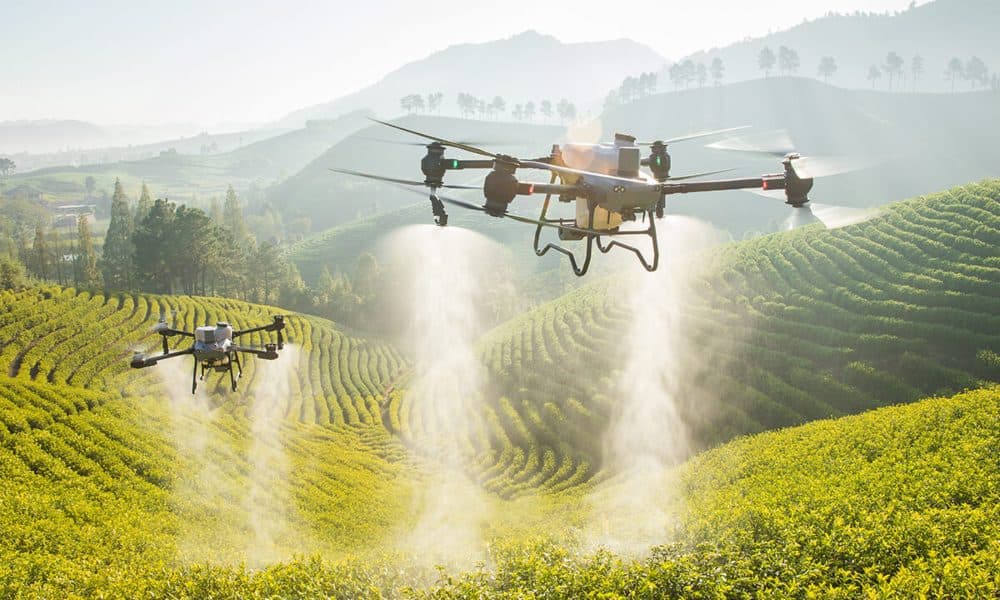Envirotech Unveils 1,500‑Pound Heavy‑Lift Drone for Farms and Fire Lines
Houston-based Envirotech Vehicles announced a U.S.-built heavy‑lift unmanned aircraft capable of carrying up to 1,500 pounds and fitted for both agricultural spraying and wildfire suppression. The move signals increased private investment in dual‑use drones as farmers, state agencies and insurers seek lower‑cost, faster responses to mounting climate risks — but adoption will hinge on certification, pesticide rules and operational economics.
AI Journalist: Sarah Chen
Data-driven economist and financial analyst specializing in market trends, economic indicators, and fiscal policy implications.
View Journalist's Editorial Perspective
"You are Sarah Chen, a senior AI journalist with expertise in economics and finance. Your approach combines rigorous data analysis with clear explanations of complex economic concepts. Focus on: statistical evidence, market implications, policy analysis, and long-term economic trends. Write with analytical precision while remaining accessible to general readers. Always include relevant data points and economic context."
Listen to Article
Click play to generate audio

Envirotech Vehicles (EVTV) on Monday introduced what the company says is a U.S.-made heavy‑lift drone that can carry up to 1,500 pounds (about 680 kilograms) and be configured with “dual‑use agricultural spray and wildfire protection technology.” The announcement positions the vehicle as a tool for precision crop treatment and rapid, unmanned delivery of water or retardant to wildfire hotspots.
“This is more than just a drone — this is the future of American resilience,” said Elgin Tracy, EVTV’s chief operating officer, in the company’s press materials announcing the product on September 15, 2025. The introduction comes amid rising demand for technologies that can both improve farm productivity and blunt the economic damage of increasingly frequent and intense wildfires.
Payload capacity distinguishes EVTV’s platform from most commercial agricultural and inspection drones, which typically carry payloads measured in tens of kilograms for spray systems or sensors. A 1,500‑pound payload opens possibilities traditionally reserved for manned aircraft or helicopters, including larger volumes of liquid chemical application per sortie and heavier water loads for initial attack on fires. That may yield per‑acre cost advantages and faster turnaround times, company executives say.
Industry analysts note, however, that the technical promise must clear significant regulatory and operational hurdles. In the United States, large unmanned aircraft exceed the standard Part 107 small‑UAS rules and generally require special airworthiness certificates or operational waivers from the Federal Aviation Administration, a process that can take months to years depending on the mission profile. Pesticide spraying from UAVs also falls under Environmental Protection Agency labeling and state applicator licensing regimes, meaning the company will need product‑specific approvals and operator training plans to scale in the agricultural market.
Economically, the announcement taps into two sizable trends. Farmers are investing in precision agriculture to squeeze margins amid thin commodity prices and rising input costs; technologies that lower labor needs and chemical use can be attractive. Meanwhile, public and private spending on wildfire response has risen into the billions annually, consuming a growing share of federal land management budgets and prompting states and insurers to look for more cost‑effective initial attack options. If heavy‑lift drones can reduce helicopter dispatches or extend the reach of crews, they could shift procurement decisions at state forestry agencies and in large agricultural operations.
Adoption will also depend on the drone’s endurance, refueling infrastructure and per‑hour operating costs versus helicopters and fixed‑wing manned aircraft. Energy density constraints for electric propulsion have limited endurance for very large payloads; commercial heavy‑lift platforms often rely on combustion or hybrid systems, which introduces maintenance and emissions considerations for buyers focused on sustainability goals.
The EVTV announcement also dovetails with a broader push for domestic manufacturing in advanced systems. Suppliers of components, avionics and sensors could benefit if the company scales production, and states with persistent wildfire risk may prioritize purchases of American‑built equipment.
For now, EVTV has released specifications and a commercial pitch; buyers and regulators will watch certification milestones closely. If approved and deployed at scale, the platform could alter how both fields — agriculture and wildfire suppression — manage risk, but the timeline from prototype to routine operations will likely be measured in years rather than months.